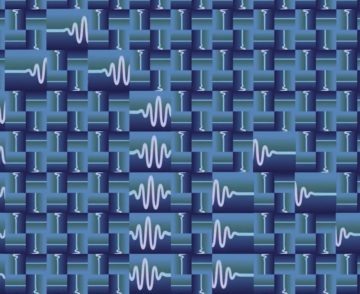Alexander Hellemans in Quanta:
 In an increasingly data-driven world, mathematical tools known as wavelets have become an indispensable way to analyze and understand information. Many researchers receive their data in the form of continuous signals, meaning an unbroken stream of information evolving over time, such as a geophysicist listening to sound waves bouncing off of rock layers underground, or a data scientist studying the electrical data streams obtained by scanning images. These data can take on many different shapes and patterns, making it hard to analyze them as a whole or to take them apart and study their pieces — but wavelets can help.
In an increasingly data-driven world, mathematical tools known as wavelets have become an indispensable way to analyze and understand information. Many researchers receive their data in the form of continuous signals, meaning an unbroken stream of information evolving over time, such as a geophysicist listening to sound waves bouncing off of rock layers underground, or a data scientist studying the electrical data streams obtained by scanning images. These data can take on many different shapes and patterns, making it hard to analyze them as a whole or to take them apart and study their pieces — but wavelets can help.
Wavelets are representations of short wavelike oscillations with different frequency ranges and shapes. Because they can take on many forms — nearly any frequency, wavelength and specific shape is possible — researchers can use them to identify and match specific wave patterns in almost any continuous signal. Because of their wide versatility, wavelets have revolutionized the study of complex wave phenomena in image processing, communication and scientific data streams.
More here.
